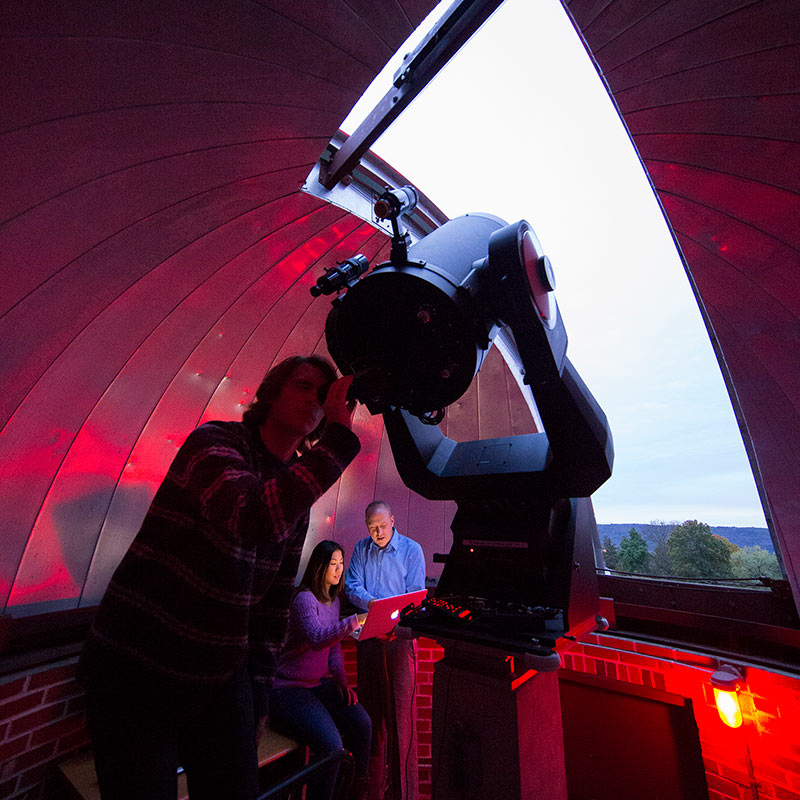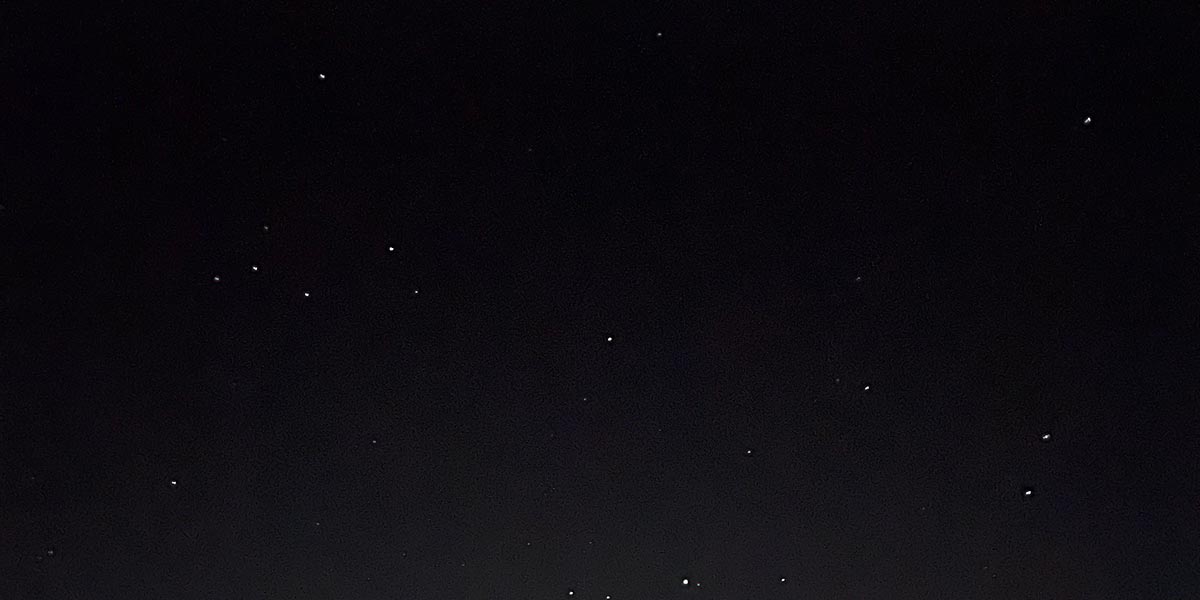
This is a rigorous yet broad introduction to astronomy, where theoretical background
is complemented by hands-on, observational experience. Situated within the liberal
arts tradition of Juniata College, you will explore the role of astronomy in culture,
and have the opportunity to study abroad.
Astronomy students at Juniata College will be able to clearly articulate scientific
ideas both orally and in writing, explain the apparent motion of celestial objects
as seen from Earth, and use telescopes, cameras, and spectrometers to observe, analyze,
and interpret the light received from celestial objects.
Connect the laws of physics to specific astronomical processes and phenomena.

This is a rigorous yet broad introduction to astronomy, where theoretical background
is complemented by hands-on, observational experience. Situated within the liberal
arts tradition of Juniata College, you will explore the role of astronomy in culture,
and have the opportunity to study abroad.
Astronomy students at Juniata College will be able to clearly articulate scientific
ideas both orally and in writing, explain the apparent motion of celestial objects
as seen from Earth, and use telescopes, cameras, and spectrometers to observe, analyze,
and interpret the light received from celestial objects.
Connect the laws of physics to specific astronomical processes and phenomena.

This is a rigorous yet broad introduction to astronomy, where theoretical background
is complemented by hands-on, observational experience. Situated within the liberal
arts tradition of Juniata College, you will explore the role of astronomy in culture,
and have the opportunity to study abroad.
Astronomy students at Juniata College will be able to clearly articulate scientific
ideas both orally and in writing, explain the apparent motion of celestial objects
as seen from Earth, and use telescopes, cameras, and spectrometers to observe, analyze,
and interpret the light received from celestial objects.
Connect the laws of physics to specific astronomical processes and phenomena.
Paul E. Hickes Observatory

Paul E. Hickes Observatory

Paul E. Hickes Observatory

Paul E. Hickes Observatory

 skip to content
skip to content





